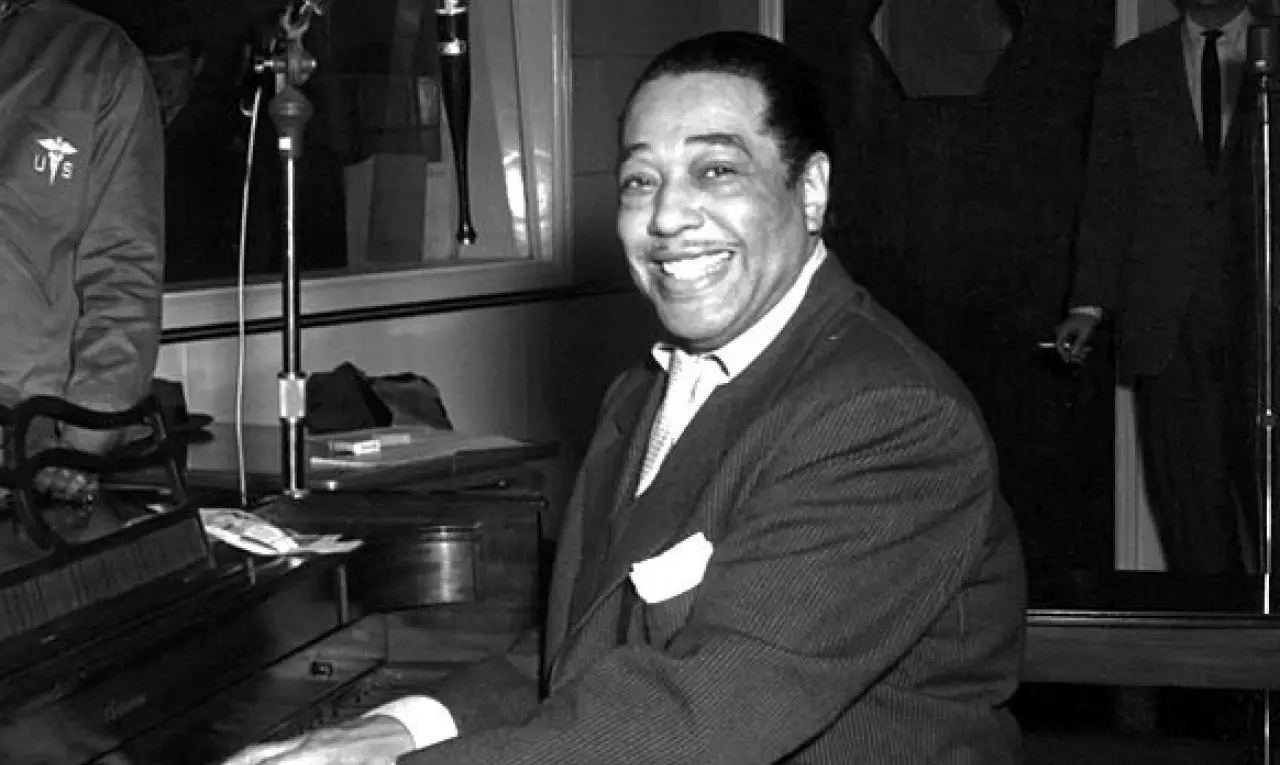Duke Ellington Songs Ranked
Edward Kennedy “Duke” Ellington (April 29, 1899 – May 24, 1974) was an American composer, pianist, and leader of a jazz orchestra, which he led from 1923 until his death half a century later. Born in Washington, D.C., Ellington was based in New York City from the mid-1920s and gained a national profile through his orchestra’s appearances at the Cotton Club in Harlem. In the 1930s, his orchestra toured in Europe. Although a pivotal figure in the history of jazz, in the opinion of Gunther Schuller and Barry Kornfeld, “the most significant composer of the genre”,[2] Ellington himself embraced the phrase “beyond category” as a liberating principle and referred to his music as part of the more general category of American Music. Ellington was known for his inventive use of the orchestra, or big band, and his eloquence and charisma. His reputation continued to rise after he died. He was awarded a posthumous Pulitzer Prize Special Award for music in 1999. Here are all of Duke Ellington’s albums ranked.
Don’t miss the music of Duke Ellington! Click and experience the sound of the influential music legend!
10. The Mooche (The Mooche, 1928)
“One of the finest early singles in a catalog that still may be the most impressive body of work by an American musician, “The Mooche” begins with a wondrously foreboding clarinet riff by Barney Bigard. However, even at this early stage, Duke Ellington possessed an unmatched capacity for mood shifts. By the time the wordless vocals of Baby Cox enter, “The Mooche” has shape-shifted into something else entirely.”
9. Satin Doll (Satin Doll, 1962)
“The Duke was in great form. This album is a find. The recording is done in the studio as Duke had a habit of recording live performances over in the studio. Add this one to your collection.”
8. It Don’t Mean a Thing (If It Ain’t Got that Swing) (It Don’t Mean a Thing (If It Ain’t Got that Swing), 1943)
“One of the very last albums recorded by Duke Ellington’s band before he died, and it sounds remarkably original, even in its arrangements, showing that the great artists, unlike those who pay them tribute, are always changing things in their own work.”
:format(jpeg):mode_rgb():quality(90)/discogs-images/R-11751248-1521754599-1264.jpeg.jpg)
7. Fleurette Africaine (Fleurette Africaine, 1962)
“This is a great recording of an historic concert. I bought it for the ‘Diminuendo in Blue,’ which was one of the pieces that got me involved with jazz decades ago. I love the entire album. What could be better than Ellington?”
See more: Duke Ellington Albums Ranked
6. Jeep’s Blues (Jeep’s Blues, 1957)
“I can only describe this as the walk of the most beautiful woman, out on an evening stroll, dressed classy but strutting sassy. The beginning of this song is like the first moment you see her and when the trumpets first blare its like she just flicked her hair back and caught your eyes with her. Jazz is so damn sexy !”
5. East St. Louis Toodle-Oo (East St. Louis Toodle-Oo, 1927)
“”East St Louis Toodle-Oo” was recorded in March 1928 at the Pathe Studios in New York by the Washingtonians consisting of Duke Ellington (piano), Bubber Miley, Louis Metcalf (trumpet), Joe Nanton (trombone), Otto Hardwick (soprano, alto, baritone and bass saxophone), Harry Carney (clarinet, alto and baritone saxophone), Barney Bigard (clarinet and tenor saxophone), Fred Guy (banjo), Wellman Braud (string bass) and Sonny Grier (drums).”

4. Cotton Tail (In a Mellotone, 1972)
“Two classic pieces of Ellingtonia from a time when the band was near its peak. Of the two tracks, the peculiar rhythms of “Cotton Tail” — which in a way pre-figure bop — is my fave, although the swagger of “Never No Lament” is also captivating.”
See more: Bill Withers Songs Ranked
3. Come Sunday (Come Sunday, 1942)
“This recording is amazing, settling and forced me willingly to sit still and listen. In reflection, we are indebted to those who have gone before us. We are to be held to remembering, and telling the story for everyone to hear.”
2. Caravan (Caravan, 1936)
“Caravan amalgamates two exotic visions. One is of Arabia, with a caravan traveling across the desert sands. The band creates a quirky, undeniable rhythm which contributes to the sense of journey and movement. These are camels with a sense of swing.“

1. Black Beauty (Black Beauty, 1928)
“Ellington recorded his beautiful composition “Black Beauty” no less than three times in 1928. He did full-band versions for the Brunswick and Victor labels in March, and then did something he rarely did: a solo piano version for Okeh in October. This is a classic no matter which recording you choose, and the solo recording is so unique and lovely that it should be heard, but the Victor record is the best version ever and hands down the best big band recording of the 1920s.”

